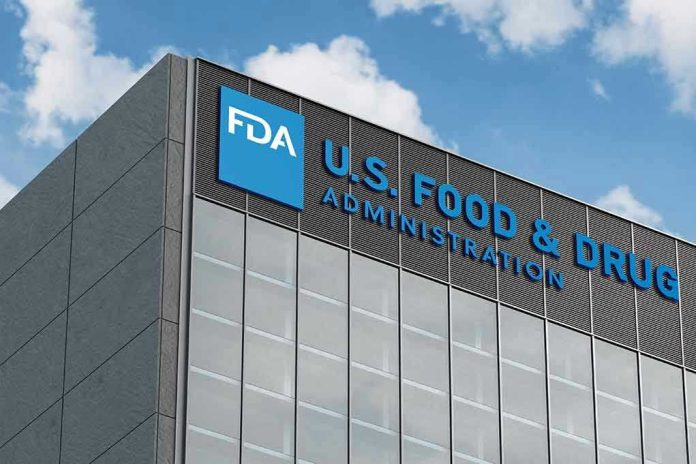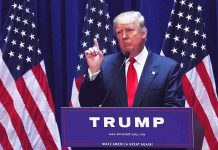
Political pressure and social media campaigns forced out, then rapidly reinstated, the FDA’s top vaccine regulator—raising alarms about political interference in America’s drug safety oversight.
Story Snapshot
- Dr. Vinay Prasad was ousted and then reinstated as FDA’s chief vaccine regulator within two weeks after political controversy.
- His brief exit followed right-wing criticism over past political views and a high-profile gene therapy safety crisis.
- The Trump White House and FDA leadership requested his return, dismissing media criticism as “fake news.”
- This episode spotlights the growing influence of political and social media campaigns on regulatory agencies.
Prasad’s Abrupt Exit and Return: A Case Study in Political Influence
Dr. Vinay Prasad, a respected hematologist-oncologist and advocate for evidence-based medicine, was appointed to lead the FDA’s Center for Biologics Evaluation and Research (CBER) in May 2025. His appointment was seen as a move to restore scientific rigor in vaccine and gene therapy oversight. However, by late July, Prasad abruptly resigned amid mounting political controversy tied to his handling of a gene therapy safety crisis and targeted criticism from right-wing social media influencers over his past liberal affiliations. Less than two weeks later, following a White House review and strong advocacy from FDA Commissioner Marty Makary, Prasad was formally reinstated as CBER director on August 9, 2025.
The rapid reversal in Prasad’s position was triggered by intense public scrutiny after several deaths linked to Sarepta Therapeutics’ gene therapy for Duchenne muscular dystrophy. The FDA paused shipments of the therapy, inciting outrage from both patient groups and political actors. Right-wing influencer Laura Loomer led a campaign accusing Prasad of undermining the Trump administration’s priorities at the FDA, turning his resignation into a lightning rod for debates about political loyalty and regulatory integrity. The White House’s subsequent review of Prasad’s record cleared him of wrongdoing, and both the Department of Health and Human Services (HHS) and FDA leadership publicly defended his reinstatement, branding media criticism as “fake news.”
Gene Therapy Oversight and the Challenge of Integrity
The controversy over Prasad’s leadership unfolded amid heightened scrutiny of gene therapy regulation. CBER, under Prasad, had halted shipments of Sarepta’s therapy following patient deaths—a move designed to prioritize safety, but one that also brought the agency into the political crosshairs. The Trump administration’s FDA has faced ongoing pressure to accelerate drug approvals, but recent safety incidents have exposed the risks of moving too quickly. Prasad’s forced resignation and swift return signal a volatile environment where regulatory decisions are increasingly subject to partisan attack, challenging the agency’s ability to maintain independent oversight. These events raise concerns among those who value limited government and constitutional checks, as political campaigns now appear to wield direct influence over who leads America’s most critical public health agencies.
Expert observers such as Steven Grossman, writing for the FDA Matters blog, caution that leadership at CBER and FDA cannot operate in a vacuum. Life-and-death decisions require balancing input from patients, industry, and political leaders—making the agency especially vulnerable to coordinated media campaigns. Prasad’s return was welcomed by supporters as a victory for scientific integrity, but critics, including Loomer and her followers, maintain that his political views are incompatible with the Trump administration’s agenda. This ongoing conflict illustrates how social media and partisan activism can disrupt regulatory stability and potentially undermine public confidence in drug safety oversight.
Broader Implications: Political Pressure, Agency Independence, and Public Trust
Prasad’s reinstatement has restored short-term stability to FDA leadership, but the episode sets a worrisome precedent for future agency officials. The rapid ouster and return of a top regulator under political and social media pressure signal that even the most critical public health roles are now subject to ideological litmus tests and online outrage campaigns. For conservatives concerned about government overreach and the erosion of constitutional norms, these developments highlight the importance of protecting regulatory agencies from undue political interference, as well as the risks of ceding public health decision-making to coordinated activist efforts. FDA staff, biotech companies, and patient groups alike are left to navigate an environment where science, policy, and politics are increasingly intertwined—and where leadership stability can be upended in a matter of days.
While Prasad’s future as chief medical and scientific officer remains uncertain, the FDA continues to face close public and political scrutiny over gene therapy safety and the integrity of its approval process. This episode serves as a cautionary tale for those who believe in evidence-based regulation and limited government, underscoring the need for vigilance against efforts—on either side of the aisle—that threaten to politicize the agencies charged with safeguarding the nation’s health and constitutional values.
Sources:
Vinay Prasad returns to the FDA, weeks after his ouster
Prasad Back at CBER After 10-Day California Vacation
He’s Back: Vinay Prasad Returns as FDA CBER Head














